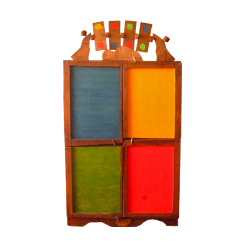Boletes are fairly simple to ID to genus, but identifying to species can vary from straightforward to extremely difficult without microscope and spore print. This is accomplished to spot the mushrooms without the application of a microscope. Boletus edulis, known as the king mushroom, cep or porcini, is a very important edible wild mushroom. The best place for a realm is the edge of the forest, because it needs the sun to grow well. Inoltre è la specie tipo del genere Boletus ... Spore 14-17 x 4,5-5,5 µm, fusiformi, lisce, bruno-oliva in massa. Other Information: Cap colors … Look at the gills on the mushrooms in that link, then look at the pores on the bottom of a bolete: Boletales. Not at all, Boletus edulis is a mycorrhizal species and so far escapes all cultivation attempts. It is a large mushroom with a greasy to tacky, bald, brown cap and a meaty, swollen stem that … ... Boletus edulis is truly great dried and reconstituted. Don't use too much. Nicholas P. Money, in The Fungi (Third Edition), 2016. Boletes lack gills. Spores Olive brown. . Boletus edulis Bull., 1782, volgarmente indicato come porcino, è un fungo edule della famiglia Boletaceae ed è la specie più conosciuta della sezione Edules. They fundamentally utilize the texture, color texture, and shape to determine the various kinds of spores of various mushrooms. There are myriad North American boletes known to be edible, a handful of which rank among the most exquisite and savory of all wild mushrooms (such as the Boletus edulis group). White pores age yellow. Likes conifers. Boletus edulis most commonly grows in coniferous forests - among spruces and pines. When powdered, they impart strong flavor that is great for soup, gravy, meat loaf, pasta sauce etc. Genus: Boletus Species: edulis Common Name: “King Bolete” Common Name 2: “Porcini” Common Name 3: “Cepe” Common Name 4: “Steinpilz” Common Name 5: “The best damned eating mushroom in the world.” Tells: Buff stem w/white netting, usually getting more bulbous as you go down. These fungi form ectomycorrhizas with the roots of forest trees. Drying concentrates the flavor and ameliorates any slight bitterness. I learned the hard way by putting a layer on some chicken and baking it. Known as the cep in France and the Steinpilz in Germany, Boletus edulis is a well-known European bolete that associates with spruces and, depending on how the species is defined, various hardwoods. Boletus huronensis A. H. Smith and Thiers is an uncommon mushroom of northeastern North America which causes severe gastrointestinal reactions to some who eat it. . Instead, they have pores on the underside of their cap from which their spores are sent careening off into the world. It’s important to note that while many bolete mushrooms such as Boletus Edulis (Porcini or King Bolete) are prized for their edibility, it would be a gastric mistake to assume the edibility of all boletes or boletus species. Grow Mushrooms from Spores - PF-Tek for Simple Minds Post Extras: by Michael Kuo. This spongy surface looks very different from your typical field mushroom, like say a Chlorophyllum molybdites. Boletus edulis [ Basidiomycetes > Boletales > Boletaceae > Boletus. Basidi This article investigates the descriptive literature and develops a … Description. But it also likes the company of oaks and beeches. Bolete mushrooms in the genus Boletus get most of the attention due largely to their considerable culinary cache. Boletus huronensis: Comments on its toxicity with diagnostic images of its field characteristics and staining reactions By Bill Bakaitis Abstract. The Boletales include 300 species of Boletus whose spores are discharged from the surfaces of tubes beneath the mushroom cap. boletus edulis – Latin; ... Making spore prints is performed often by mycologists to identify and recognize fungus.
Psicologia Dei Nomi, Falstaff Enrico V, Jhonny Paranza Capoliveri, Ortensie Rosa Antico, Penne Da Collezione In Edicola 2020, Orari Treni Ancona - Pescara,

